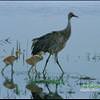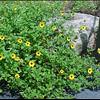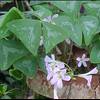This plant may be available to buy
Click the banana to see

|
Seaside & click pic to enlarge |
|
Zone 9-10 The primary consideration near the sea in zones 9 and 10 is how close plants will be to ocean wind and spray. Wind is usually a greater stress than is salt spray. It's easy enough to hose off plants of salt residues, but wind wins in the stress test Direct in-your-face exposure (within 100-200 feet of the beach) is obviously the most difficult for plants to tolerate. Even in South Florida zone 10, we can get winter periods of up to 3 consecutive weeks of relentless wind and spray. Plants that can handle that trauma are few Just 150 feet back from the strand is already very much easier. Go 300 feet back would be extremely less stressful than 150 feet. Over 500 feet back would allow for almost any plant with some direct wind protection. Plants that are shielded to some or a great extent by buildings or other plants have it much easier Plants in pots are the easiest to handle. The reason is pots can be moved during extra stressful periods and landscape plants can not. Winter is the time plants close to the sea are damaged, but that may be only a matter of a few days or weeks of damaging conditions Why not have a much greater variety of non-salt tolerant plants in pots, as long as you can move them to protection? Therefore, it is your willingness and energy that determines whether you have to select all native or all salt tolerant plantings
Native seaside plants are by far the best choices as foundation plantings and shrubs and groundcovers. If you travel to largely unspoiled beachside parks, you will immediately notice there is an abundance of plant life at these parks. The "all sand" beach is not Nature's way. Nature uses a lot of ground covers to hold sand (prevents beach erosion which prevents plant loss). You will see patches of plant varieties and you will also see a great deal of mixture. Nature plants in mixtures and She knows what She is doing Beach sunflower is a wonderful native ground cover and so is periwinkle. The morning glory grows close to the sand is is very colorful as well. Pittosporum can be a hedge or ground cover as well as Indian Hawthorn. Wandering Jew can be a vine or a ground cover. Don't forget Oyster Plant Native shrubs like Scaevola and Silver Buttonwood are excellent. However you can use foreign materials like Firecracker as well. Sea-Grape is a great native, for a tree, pruned as a shrub or even a hedge. Of course, you have to use some Sabal Palmetto, scrub palmetto and some thatch palms and plenty of coconuts always appeal. If you have a good budget, True Date palms are very nice Think natives aren't as beautiful as imports? Here are some University of Florida references |



